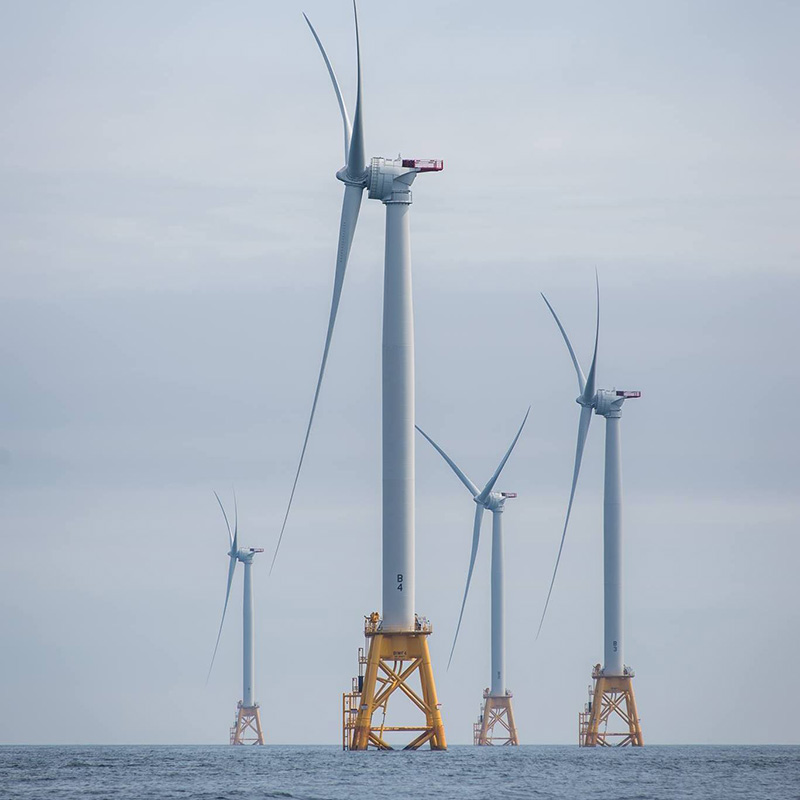Interior Secretary Deb Haaland announced plans for up to seven new offshore wind lease sales, from Maine to the Gulf of Mexico and in the Pacific off California and Oregon.
“This timetable provides two crucial ingredients for success: increased certainty and transparency,” Haaland said in an address to the American Clean Power Association’s offshore wind conference Wednesday in Boston, Mass.
“Together, we will meet our clean energy goals while addressing the needs of other ocean users and potentially impacted communities,” Haaland said. We have big goals to achieve a clean energy economy and Interior is meeting the moment.”
With the Bureau of Ocean Energy Management accelerating its timetable to review wind developers’ plans and prepare future lease offerings, agency officials are insisting they learned from mistakes dealing with the commercial fishing industry, and will work with them and other stakeholders “to minimize conflict with existing uses and marine life.”
“We are working to facilitate a pipeline of projects that will establish confidence for the offshore wind industry,” BOEM Director Amanda Lefton said Wednesday.
“At the same time, we want to reduce potential conflicts as much as we can while meeting the Administration’s goal to deploy 30 gigawatts of offshore wind by 2030. This means we will engage early and often with all stakeholders prior to identifying any new Wind Energy Areas.”
Those future leases would be in the Gulf of Maine – requiring use of floating turbines in deep water – the New York Bight and Mid-Atlantic to the Carolinas, the Gulf of Mexico and off California to Oregon, like Maine requiring floating installations.
BOEM officials say they could impose new lease stipulations, “such as lessee reporting requirements on efforts to minimize conflicts with other ocean users; mechanisms for project labor agreements; and investments in the U.S. domestic supply chain,” as the agency has proposed in its proposed lease sale notice for the New York Bight issued in June.
In a related announcement the Department of Energy said it is putting up $13.5 million to fund four projects “that will inform offshore wind siting, permitting and help protect wildlife and fisheries as offshore wind deployment increases.”
“Harnessing the incredible potential that exists within offshore wind energy is an essential piece of reaching a net-zero carbon future,” said . “In order for Americans living in coastal areas to see the benefits of offshore wind, we must ensure that it’s done with care for the surrounding ecosystem by co-existing with fisheries and marine life – and that’s exactly what this investment will do,” said Energy Secretary Jennifer M. Granholm.
Two of the projects will support wildlife and fisheries monitoring efforts on the East Coast, with the other two focused on “preparing the West Coast for floating offshore wind development by collecting wildlife distribution data and developing tools to monitor the environmental effects of floating offshore wind energy,” according to DOE officials.
• A team based at Duke University in North Carolina will assess the risks that offshore wind development may pose to birds, bats, and marine mammals; prioritize wildlife monitoring needs; and collect biological and behavioral data at offshore wind farms on the East Coast, with funding at $7.5 million.
• The Coonamessett Farm Foundation and partners on Cape Cod, Mass., will survey changes in commercial fish and marine invertebrate populations and seafloor habitats at an offshore wind development site on the East Coast, funded for $3.3 million.
• Oregon State University will conduct visual surveys and acoustic monitoring of marine mammals and seabirds to develop predictive density maps of species present in potential wind energy development areas on the West Coast, funded for $2 million.
• The Woods Hole Oceanographic Institution in Massachusetts will develop next‐generation autonomous robotic technology for environmental monitoring of marine organisms and the seafloor at potential wind energy development areas on the West Coast, funded at $750,000. Wind energy advocates praised Haaland’s announcement.
“A successful American offshore wind future needs clarity around the leasing schedule and Interior's outline of potential wind lease sales through 2025 helps provide that,”said Erik Milito, president of the National Ocean Industries Association. “Providing a reliable and predictable road map of offshore wind opportunities will help boost critical investments into the supply chain, ports, and workers. NOIA applauds Interior for helping to provide greater clarity as to where and when future offshore wind leases may be held."





